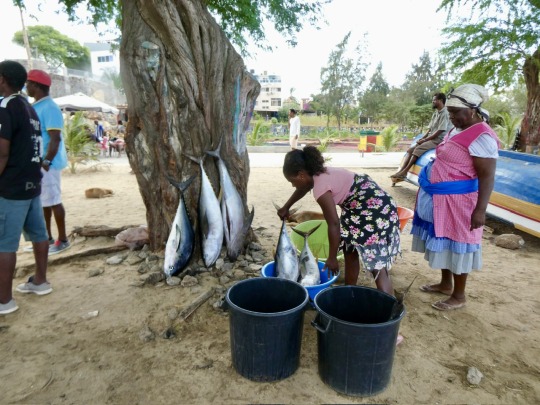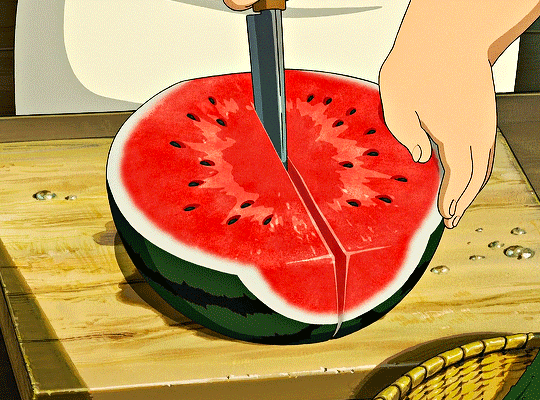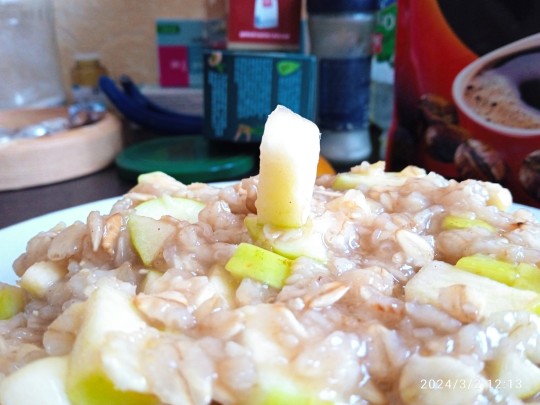#world food
Text


Sípia amb pèsols (cuttlefish with peas). It can be made with or without potatoes.
It's a traditional dish from from the Empordà area of Catalonia and from Menorca (Balearic Islands), and one of those dishes that will definitely make you want to dip bread in its sauce.
Photos: Pa amb vi i sucre and Descobreix Menorca.
#sípia amb pèsols#menjar#food#fish#cuttlefish#pea#peas#foodie#stew#food photography#savory#delicious#world food#mediterranean food#mediterranean cuisine#cuisine#mediterranean diet#empordà#menorca#catalunya#illes balears
91 notes
·
View notes
Text
West African countries like Nigeria, Senegal, Mali and Ghana are now sought-after for their largely unexplored cuisine. The international community has started to recognize the region’s vibrant and healthy ingredients and flavours that could rival that of South-East Asia. West African cuisine is spicy, wholesome and ideal for one-pot dishes that perfectly resonates with the current demand in the food industry. This emerging cuisine is believed to be the next big thing this year and could even surpass Indian food as the new takeaway choice of many.
West African cuisine and innovation
With the number of innovation in the open food markets on the rise, more and more international brands are starting to adopt West African techniques, flavours and combining these with their own. Product innovation includes some key ingredients used in most West African dishes like cassava, okra, plantain, moringa, kola nuts, yam, beans, sorghum, peanuts, ginger, scotch bonnet chillies, and fonio.
Even with the increasing number of people converting to different dietary changes and restrictions, West African cuisine does not seem fazed, thanks to their mainly plant-based and gluten-free dishes. Vegans and vegetarians can still enjoy a big serving of a West-African dish minus the guilt.
West African Cuisine becoming more accessible to the international scene
The rise of some renowned kitchen superstars from West Africa helped in the introduction of West African cuisines to the international food community in the UK and other western countries. The Ghanaian born Zoe Adjonyoh, for example, led the change in raising awareness on the diverse cuisines of her home country by starting her business and writing a book with the same name Zoe’s Ghana Kitchen.
Another notable woman, an ambassador for West African cuisine, a cooking instructor, a published author, business mentor and an advocate for women in leadership, Ebere Akadiri, brought West African cuisine into the Netherlands with her ‘Vibrant West African Cuisine” cooking workshops, video course, packaged signature spice blends and a cookbook entitled Vibrant West African Cuisine. Her brand “Ataro” changed the narratives in the Netherlands even before West African Cuisine became a trend in Europe.
The owner of the first ever Nigerian fine dining restaurant with a Michelin star in the UK, Ikovi, used traditional Nigerian ingredients and combined them with the contemporary techniques used in the West and the result was a new and exciting fusion of flavours that appealed to the European market.
There is a growing opportunity in Europe for emerging cuisines like that of West Africa. The ingredients are natural and easy to find, can be elaborately and paired merely with contemporary cooking methods used in the West and there is a growing number of people craving for an innovative, safe and tasty food adventure.
#How Does West African Cuisine Fit in Today’s Food Trends? - Vibrant West Afrian Cuisine#west african food#world food#african food#africa#cuisine#global cuisine#cooking healthy
5 notes
·
View notes
Text
emily gwen, the creator of the sunset lesbian flag that we’ve come to commonly use, still continues to live in poverty.

multi-billion dollar companies have used their design and made profit from it, and yet they have not seen a cent for their creation.
i’ve been friends with emily for years, and i have not once seen them be financially stable the entire time. i’ve seen them homeless, unemployed, starving. right now, they need our help more than ever.
please consider donating to emily’s ko-fi, especially if you’ve used their design to create something and profited from it.
#emily’s finally found housing after couch surfing at friends’ places for months#they’ve got a lot of debt rn on top of bills and rent#rn they don’t have food in the house and they’re starving#they don’t deserve this at all they are so kind and i literally hate to see them suffering#please please pleaaase donate and reblog#they don’t ask for much but they deserve the world#mutual aid#crowdfunding#donation post#belle speaks
32K notes
·
View notes
Text
Cachupa
0 notes
Text
Exploring Global Flavors: A Roundup of World Food Delights
Exploring the diverse flavors and culinary traditions of the world is an adventure that can be experienced right at your own dining table. From exotic spices to traditional cooking techniques, the world of food offers a limitless array of possibilities for tantalizing your taste buds. In this blog post, we will take a closer look at some unique and delicious products inspired by cuisines from…

View On WordPress
0 notes
Text
Exploring Santiago: Northwards To Tarrafal

View On WordPress
#Africa#beaches#Cabo Verde#Cape Verde#Fishermen#Fishing fleet#independent travel#Island life#Local life#Mountains#No Stress#Santiago#Tarrafal#Travel journalism#travel photography#world food
0 notes
Text
happy national indian pudding day!

0 notes
Text
I have discovered the world foods section of the supermarket with ingredients for recipes I couldn't make before because I couldn't find the ingredients.
1 note
·
View note
Text

#yemen#jerusalem#tel aviv#current events#palestine#free palestine#gaza#free gaza#news on gaza#palestine news#news update#war news#war on gaza#unrwa#world food programme#world central kitchen#famine#gaza genocide#genocide
3K notes
·
View notes
Text











The Secret World of Arriety (2010)
Howl's Moving Castle (2004)
Kiki's Delivery Service (1989)
Ponyo on the Cliff by the Sea (2008)
The Wind Rises (2013)
When Marnie Was There (2014)
My Neighbor Totoro (1988)
#the secret world of arrietty#howl's moving castle#kiki's delivery service#the wind rises#ponyo on the cliff by the sea#when marnie was there#my neighbor totoro#studio ghibli#ghibli#ghibli food#ghiblisdaily#ghiblicentral#fyghibli#m*#useroro#forvy#eritual#dearestmillie#aleksbestie
5K notes
·
View notes
Text

Cod with raisins and hard boiled egg (bacallà amb panses i ou dur). This is a dish that many families in our country traditionally eat on Good Friday, and some families might also eat it during Lent.
Photo from the recipe blog Pa amb vi i sucre.
#menjar#divendres sant#setmana santa#quaresma#food#food photography#foodie#foodblr#cooking#good friday#holy week#lent#world food#stew#fish#cod#mediterranean cuisine#mediterranean food#cuisine
31 notes
·
View notes
Text
BY FRÉDÉRIC MOUSSEAU & ANDY CURRIER
MARCH 10, 2023
Against the wishes of hundreds of millions of farmers, the bank is backing a model that can push economic dependence, soil depletion and pollution.
After the largest food price spike in recent decades, 2022 was dubbed the “year of unprecedented hunger”. Africa was once again at the forefront of the catastrophe, with hundreds of millions suffering from severe food insecurity.
In May that year, the African Development Bank (AfDB) launched a $1.5 billion African Emergency Food Production Facility with the stated goal of boosting food and nutrition security on the continent. This strategy is largely geared towards expanding an industrial model of agriculture centred on monocropping and increased reliance on inputs such as “improved” seed and chemical fertiliser.
To boost food production – with a focus on wheat, corn, rice, and soybean – the facility is to deliver “certified seeds, fertilizer and extension services to 20 million farmers” and provide “financing and credit guarantees for large-scale supply of fertilizer to wholesalers and aggregators”. Additionally, and in a concerning echo of Structural Adjust Programmes, the AfDB also announced that it is working to “secure commitments from African governments on implementing policy reforms on fertilizer”, after consulting with “fertilizer company CEOs”.
Framed as a crisis response, this corporate-led strategy has actually been at the core of the AfDB’s agenda for years. Its Strategy for Agricultural Transformation in Africa (2016-2025), for instance, seeks to expand the use of commercial inputs and liberalise input markets. Meanwhile, through its Africa Fertilizer Financing Mechanism, the AfDB has worked closely with the Alliance for a Green Revolution in Africa (AGRA) and the International Fertilizer Development Center as well as controversial corporate giants like Syngenta, Yara, Dangote, Export Trading Group, and Omnia Fertilizer.
Is this approach what African farmers want or need amidst shifting precipitation patterns, rising temperatures, and more extreme weather? Is it compatible with the AfDB’s commitment to support a “transition [of] food systems compatible with climate and biodiversity imperatives”? Who truly benefits from this agenda?
Do synthetic fertilisers work?
According to the AfDB, the use of fertilisers and “improved” seeds increases agricultural productivity, leading to “a huge impact on [farmers’] yields, and therefore on their income”. This notion, however, ignores the vicious cycle that reliance on chemical fertilisers leads to. As research has shown, synthetic fertilisers can deplete the land’s nutrients, meaning more and more fertiliser is needed each year to produce the same yields. This creates a dead-end in which farmers have to spend more on inputs year on year, food security doesn’t improve, and the soil loses fertility over time.
This strategy can also prove extremely expensive for countries that subsidise synthetic inputs, a common intervention of many governments on the continent. At one point, for instance, Malawi was spending 16% of its entire government budget on a farm input subsidy programme that failed to reduce hunger. The costs of these kinds of subsidies may only increase; chemical fertiliser prices reached near record levels in 2022 and are projected to remain high for several years.
As well as being ineffective and costly, the use of chemical fertilisers also devastates the environment. The supply chain for synthetic nitrogen fertiliser is responsible for 2% of all global emissions. Meanwhile, runoff of nitrogen and phosphorus lays waste to local water supplies through algal blooms. These impacts are so serious that experts have called the flood of excess nitrogen into the environment “one of the most severe pollution threats facing humanity today”.
Who gains from chemical fertiliser use?
Agrochemical corporations have made record sums during the recent crisis as the prices of nitrogen, phosphate, and potash skyrocketed. For instance, Canada’s Nutrien took in a record $5 billion in net earnings in the first half of 2022. Norway’s Yara International reported a first-quarter operating income of $1 billion, more than triple the same figure a year earlier. US company Mosaic saw its earnings per share grow by over 250% in the same period, while Germany’s Bayer boasted “outstanding sales and earnings growth, with particularly substantial gains for our agriculture business”.
Fertiliser companies have a history of thriving in times of hunger. As detailed in a report from the NGO INKOTA, top fertiliser companies captured colossal profits during the last food price crisis in 2007/8, which they then used to consolidate and expand their power.
Today, agrochemical companies see Africa as the last expansion market. While an average 135kg of fertiliser is applied per agricultural hectare globally, that figure in sub-Sahara Africa is just 17kg. On the continent, smallholder farmers have been feeding hundreds of millions of people with little need for chemical fertilisers or so-called “improved” seeds. Entrenching a greater reliance on commercial inputs for African farmers is thus seen as a major opportunity for business growth.
What do farmers want?
Across the continent, organisations representing hundreds of millions of African farmers strongly oppose this Green Revolution model of large-scale, monocrop production reliant on chemical fertilisers. The Alliance for Food Sovereignty in Africa (AFSA) and many other networks of farmers reject these programmes and have urged governments and international institutions to instead support a move to sustainable and climate-friendly methods.
This starts with the rehabilitation of African crops, such as teff, sorghum, fonio, amaranth, millet, cassava, yam, and many others. While Indigenous plants have assumed a reputation as “food for the poor” due in large part to ideas engrained during colonial rule, they are central to the diet of hundreds of millions of people. These crops are adapted to local geoclimatic conditions, which makes them more resilient to climatic shocks and less reliant on inputs than foreign cereals. By using agroecological systems that nurture healthy ecosystems, these crops can form part of a wide diversity of crops – alongside cereals, vegetables, roots, tubers, nuts and fruits – to provide a range of socio-economic, nutritional and environmental benefits – unmatched by monocrops.
Building on Indigenous knowledge, millions of farmers across Africa have assembled an abundance of effective practices and innovations that don’t require costly and polluting inputs. In Kenya, fermenting organic matter to create a nutrient rich compost called Bokashi is helping farmers restore dry, depleted soils. Farmers planting nitrogen-fixing “fertiliser trees” in Malawi are benefiting from the high levels of biomass they create and the nutrients they capture as well as their resilience to drought. A variety of nitrogen fixing leguminous plants are widely used from Malawi to Benin. And in many countries – including Senegal – cover crops are planted to protect the soil and improve the fertility through increased nutrient retention. Coupling such practices with composting, farmers across the continent have seen drastic yield increases. Mixing plants, crops, and trees also makes communities more resilient to the climate crisis by providing different sources of food and income along the year.
These are just some of the many impactful agroecological practices that are backed by scientific studies. This growing body of research – along with centuries of experience – demonstrates that alternatives to chemical fertilisers are effective, affordable, and sustainable. Moreover, unlike synthetic inputs, these approaches restore the soil over time and are unaffected by erratic global price spikes.
These practices are not just solutions to hunger. They are also essential for a shift towards resilient, environmentally sustainable farming. Yet they will remain neglected and underfunded as long as corporate bottom lines are prioritised by international finance institutions such as the AfDB. Instead of doubling down on a failed model, now is the time to direct public funds to support the solutions that African farmers are calling for across the continent.
#African Development Bank#developing world#Africa#African agriculture#agriculture#unsustainable agriculture#international politics#big agro#fertilizer#world food
0 notes
Text
Live coverage of the 20th of February 2024 is now closed.
Here is a recap of today's major events.

It is 12am in Ireland now so I have to go to bed.
I'll be back to resume live updates on Thursday.
For continuous updates while I'm gone, click the link below:
#free gaza#free palestine#gaza strip#irish solidarity with palestine#palestine#gaza#news on gaza#al jazeera#boycott israel#israel#USA#UNSC#Algeria#World Food Programme#Jenin#West Bank#West Bank Palestinians#Hamas#Islamic Jihad#Colombia#Brazil#Gustavo Petro#luis inacio lula da silva#philippe lazzarini#Summary#Recap#Current events#Latest news#News#Goodnight
4K notes
·
View notes
Photo


twitter interactions that are going to bring me to tears
#my posts#the phrase spicy food EVEN for DINNER is literally the funniest thing in the world to me rn
18K notes
·
View notes
Text
Global Gastronomy: A Delightful World Food Roundup
In a world filled with diverse cuisines and flavors, the concept of “World Food” encompasses a vast array of culinary delights that can transport us to different corners of the globe with just one bite. From spicy street food in Thailand to savory tapas in Spain, there is no shortage of delicious dishes waiting to be explored. Join us as we dive into a world of tantalizing tastes and discover…

View On WordPress
0 notes



